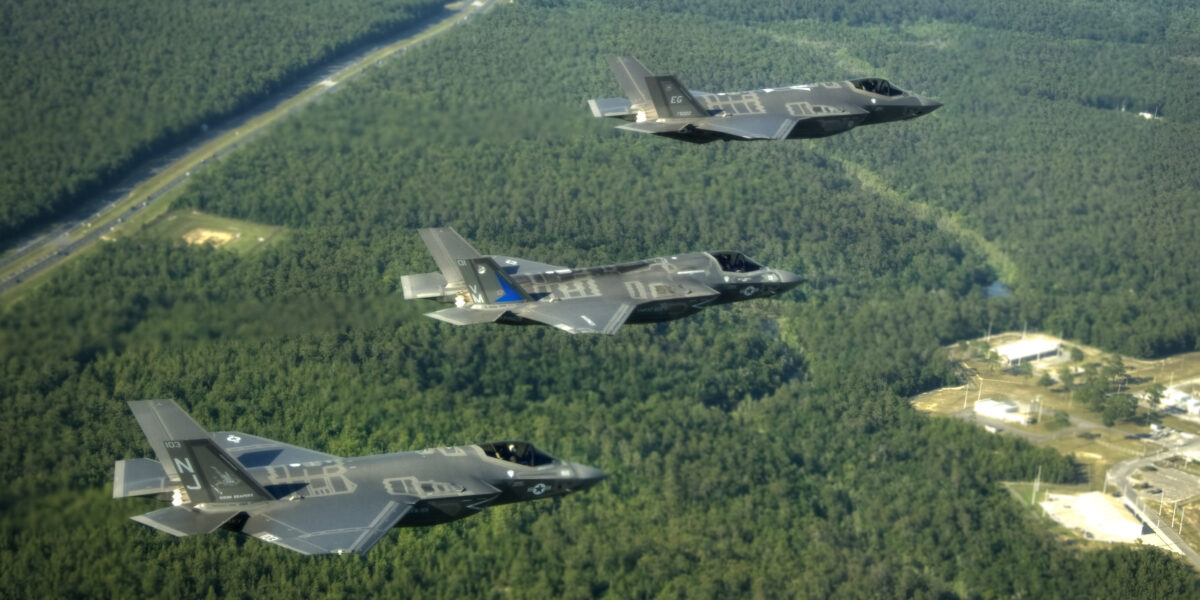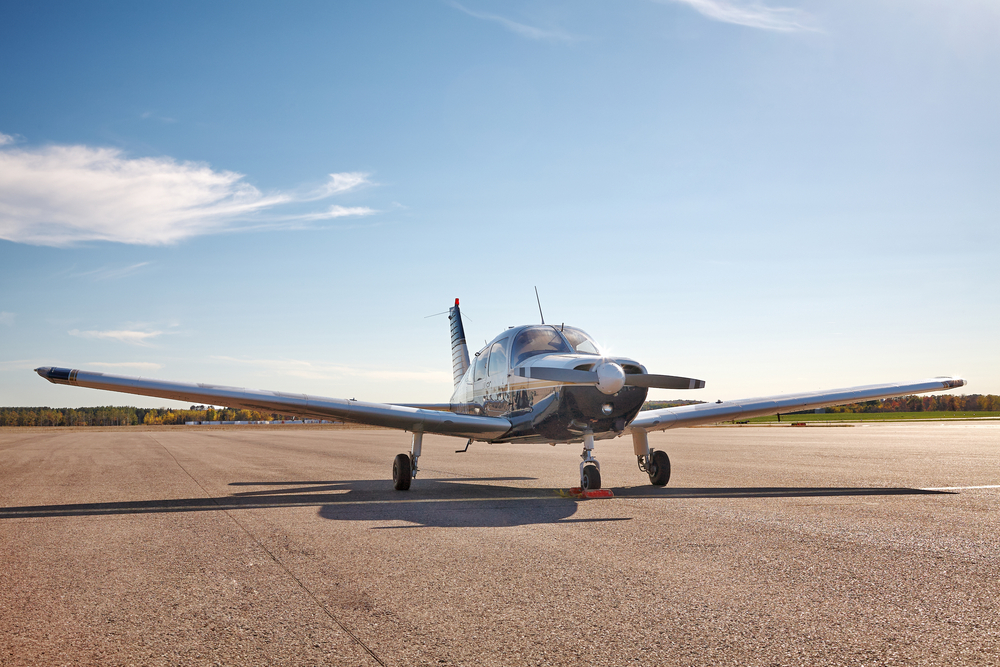Fighter jet technology has evolved dramatically over the past two decades. Fifth and sixth-generation aircraft now dominate the skies with stealth capabilities, sensor fusion, supercruise performance, and network-centric warfare systems that previous generations couldn’t imagine. Understanding which fighters lead the pack helps comprehend where military aviation technology stands today and where it’s heading.
Quick Answer: The most advanced fighter jets currently operational include the F-35 Lightning II (stealth multirole, 1,000+ built), F-22 Raptor (air superiority, supercruise capable), Su-57 Felon (Russian stealth fighter), J-20 Mighty Dragon (Chinese stealth), and Eurofighter Typhoon (advanced 4.5-gen). The F-35 dominates production with variants for Air Force, Navy, and Marines. Next-generation programs like NGAD and Tempest promise even greater capabilities by 2030.
1. F-35 Lightning II: The Global Standard
The F-35 represents the most widespread fifth-generation fighter, with over 1,000 aircraft delivered across three variants. The F-35A (conventional takeoff), F-35B (short takeoff/vertical landing), and F-35C (carrier variant) serve the U.S. and 18 partner nations. Unit cost has dropped to $80-$110 million depending on variant, making it increasingly affordable for allied air forces.
Stealth design reduces radar cross-section to that of a metal marble. The AN/APG-81 AESA radar detects targets 150+ miles away while remaining undetected. Sensor fusion combines data from radar, infrared sensors, and electronic warfare systems into a single tactical picture. The pilot sees threats, friendlies, and targets on one integrated display rather than managing separate systems.
The Pratt & Whitney F135 engine produces 43,000 pounds of thrust, pushing the F-35A to Mach 1.6. Combat radius reaches 670 nautical miles with internal fuel. Eight internal weapons stations maintain stealth profile, expandable to 22,000 pounds of ordnance on external hardpoints when stealth isn’t required. The F-35 can carry AIM-120 AMRAAMs, AIM-9X Sidewinders, JDAMs, and future hypersonic weapons internally.
2. F-22 Raptor: Unmatched Air Superiority
The F-22 remains the world’s premier air-to-air fighter despite entering service in 2005. Production ended at 187 aircraft due to costs exceeding $350 million per unit including development. The U.S. Air Force operates the entire fleet, as export was prohibited by Congress. No F-22 has ever been lost in air-to-air combat—in fact, none has even been seriously challenged.
Supercruise capability allows sustained Mach 1.8 flight without afterburners. This provides massive tactical advantages: faster response times, extended range, and reduced infrared signature. The twin Pratt & Whitney F119 engines produce 35,000 pounds of thrust each with thrust vectoring nozzles enabling 60+ degree angle of attack maneuvers impossible for conventional fighters.
Advanced stealth coatings and design reduce radar signature to 0.0001 square meters—roughly the size of a bumblebee on radar screens. The AN/APG-77 AESA radar tracks multiple targets simultaneously while operating in low probability of intercept mode. The F-22 sees threats long before they detect it. Typical engagement scenario: F-22 fires AIM-120D missiles from 100+ miles away, destroys targets, and exits before enemy fighters know they’re under attack.
3. Su-57 Felon: Russia’s Stealth Entry
Russia’s answer to the F-22 and F-35 finally entered service in 2020 after years of delays. Only 10-15 production aircraft exist currently, with plans for 76 by 2028. The Su-57 combines stealth technology with traditional Russian design philosophy emphasizing maneuverability and pilot visibility. Unit cost estimates range from $50-$100 million.
The Su-57’s stealth profile doesn’t match Western fifth-generation fighters. Exposed engine faces, gaps in panel alignment, and external sensors compromise radar signature. However, the design prioritizes frontal stealth where it matters most in beyond-visual-range combat. Rear-aspect stealth is less critical in Russian doctrine which emphasizes offensive operations.
Twin Saturn AL-41F1 engines produce 33,000 pounds thrust each with 3D thrust vectoring. This enables the Pugachev’s Cobra and other post-stall maneuvers useful in visual-range dogfights. Maximum speed reaches Mach 2+ with supercruise at Mach 1.3. Combat radius of 930 miles exceeds the F-35. Internal weapons bays carry six air-to-air missiles, with 10 external hardpoints adding flexibility. The N036 Byelka radar system uses multiple AESA arrays providing 360-degree coverage.
4. Chengdu J-20 Mighty Dragon: China’s Stealth Giant
China’s J-20 entered service in 2017, making China the third nation to field an operational stealth fighter. Production numbers remain classified but estimates suggest 200+ aircraft delivered. The twin-engine design resembles a scaled-up F-35 with canards for enhanced maneuverability. Export seems unlikely given strategic sensitivity.
The J-20’s size—75 feet long with 45-foot wingspan—exceeds the F-22 and rivals the old F-14 Tomcat. This large airframe provides exceptional fuel capacity and internal weapons volume. Four main weapons bays and two side bays can accommodate long-range PL-15 air-to-air missiles with 150+ mile range. The Type 1475 AESA radar provides look-down/shoot-down capability against stealth targets.
Initial production used Russian AL-31 engines producing 32,000 pounds thrust each. Newer aircraft feature indigenous WS-10C engines with similar performance. Development continues on the WS-15 engine promising 40,000+ pounds thrust enabling supercruise capability. Current performance includes Mach 2+ top speed and estimated combat radius of 1,200 miles. The lack of thrust vectoring limits post-stall maneuvering compared to Russian designs.
5. Eurofighter Typhoon: The Best 4.5-Generation Fighter
The Eurofighter Typhoon bridges fourth and fifth-generation capabilities, serving air forces across Europe and the Middle East. 680+ aircraft have been delivered with production continuing. The multi-nation program (UK, Germany, Italy, Spain) shares development costs while maintaining indigenous European aerospace capability. Flyaway cost runs $110-$130 million.
Twin EJ200 engines produce 20,000 pounds thrust each (33,000 with afterburner), pushing the Typhoon to Mach 2. Supercruise at Mach 1.5 provides tactical flexibility. The delta-wing canard configuration creates exceptional maneuverability with sustained 9G turns. Combat radius reaches 863 miles with drop tanks. The aircraft carries 16,500 pounds of weapons on 13 hardpoints.
The CAPTOR-E AESA radar represents the latest upgrade, detecting fighter-sized targets at 200+ miles and tracking 100+ targets simultaneously. Advanced electronic warfare systems provide comprehensive threat detection and countermeasures. The aircraft lacks stealth profile, relying instead on electronic attack, speed, and agility for survivability. Integration with the Meteor beyond-visual-range missile gives the Typhoon 100+ mile air-to-air engagement capability.
6. Dassault Rafale: France’s Omnirole Fighter
France’s Rafale serves as that nation’s primary combat aircraft, operating from both land bases and aircraft carriers. 260+ aircraft serve with French forces, with 300+ export orders from Egypt, India, Qatar, Greece, Croatia, and others. The “omnirole” design handles air superiority, ground attack, reconnaissance, and nuclear strike missions. Unit cost averages $90-$120 million.
Twin Snecma M88 engines produce 17,000 pounds thrust each (22,500 with afterburner). Maximum speed reaches Mach 1.8 with combat radius of 1,150 miles. The delta-wing canard configuration provides excellent low-speed handling for carrier operations. The airframe sustains 9G maneuvers throughout the flight envelope. Fourteen hardpoints carry 20,900 pounds of weapons including Meteor missiles, SCALP cruise missiles, and AASM precision-guided munitions.
The RBE2 AESA radar tracks 40 targets simultaneously while engaging four. The SPECTRA electronic warfare system provides 360-degree threat detection and active jamming. The pilot helmet-mounted display allows off-boresight targeting. While not stealthy, the Rafale’s small size and advanced electronic warfare capabilities provide effective survivability. The aircraft’s modular design allows rapid capability upgrades keeping it relevant through 2050.
7. F-15EX Eagle II: Old Design, Modern Technology
The F-15EX represents Boeing’s modernization of the 50-year-old F-15 design. The U.S. Air Force ordered 144 aircraft at $90 million each to replace aging F-15C/Ds. The EX variant incorporates fly-by-wire flight controls, AESA radar, infrared search and track, and modern mission computers while retaining the proven F-15 airframe. Deliveries began in 2021.
Twin General Electric F110 engines produce 29,000 pounds thrust each, maintaining the F-15’s traditional performance. Maximum speed exceeds Mach 2.5—faster than any fighter currently in production. Combat radius reaches 1,100 miles. The aircraft can carry 29,500 pounds of weapons on 23 hardpoints—more than any other fighter. This massive weapons load makes the F-15EX ideal for homeland defense, where stealth matters less than magazine depth.
The AN/APG-82(V)1 AESA radar provides modern sensor capability. Open Mission Systems architecture allows rapid software updates and technology insertion. The 20,000-hour structural life exceeds competitors by 2-3x, reducing lifecycle costs. While not stealthy, the F-15EX’s speed, range, and weapons capacity fill critical gaps in the Air Force inventory. The aircraft serves as a “missile truck” supporting stealthy F-35s and F-22s.
8. F/A-18E/F Super Hornet: The Navy’s Workhorse
The F/A-18E/F Super Hornet serves as the U.S. Navy’s primary carrier-based fighter. 600+ aircraft have been delivered since 2001, with production continuing. The Super Hornet grew from the original Hornet design, increasing size by 25% and adding 33% more internal fuel. Unit cost runs $70-$80 million. The aircraft performs air-to-air, strike, reconnaissance, and aerial refueling missions.
Twin General Electric F414 engines produce 22,000 pounds thrust each, driving the aircraft to Mach 1.8. Combat radius reaches 450 miles with internal fuel, extending to 700+ miles with external tanks and aerial refueling. Eleven hardpoints carry 17,750 pounds of weapons. The AN/APG-79 AESA radar tracks multiple targets while the ALQ-214 electronic warfare system provides comprehensive protection.
The Block III upgrade adds conformal fuel tanks, reduced radar signature, Advanced Cockpit System with 10-inch touchscreen displays, and infrared search and track. Network connectivity allows the Super Hornet to serve as a node in the Navy’s integrated battle network. While fourth-generation, the Super Hornet’s reliability, versatility, and relatively low costs ensure service through 2045. The aircraft’s proven carrier operations capability gives it advantages stealth fighters struggle to match.
Next-Generation Programs: What’s Coming
The U.S. Air Force’s Next Generation Air Dominance (NGAD) program aims to field a sixth-generation fighter by 2030. Details remain classified, but confirmed capabilities include AI-controlled wingman drones, advanced stealth, directed energy weapons, and open architecture systems. The aircraft will replace the F-22 Raptor in the air superiority role. Unit costs may exceed $300 million given advanced technology.
The U.K.’s Tempest program partners with Italy, Sweden, and Japan to develop a sixth-generation fighter entering service around 2035. Planned capabilities include swarming drone control, laser weapons, hypersonic missiles, and virtual reality cockpits. The program emphasizes exportability unlike the F-22. European manufacturers aim to maintain indigenous fighter development capability rather than depending on American designs.
China’s alleged sixth-generation fighter prototype appeared in 2024 flight tests, suggesting faster development than Western intelligence predicted. Limited information exists, but the tailless design indicates emphasis on stealth and range. If operational by 2030, it would represent a significant technological achievement challenging Western air superiority assumptions.
Learning More About Military Aviation
Understanding modern fighter capabilities requires comprehensive knowledge of aviation technology, tactics, and history. The World Encyclopedia of Fighter Aircraft provides detailed coverage of fighter development from World War I through modern superfighters. For current military aviation, Modern Military Aircraft covers fighting aircraft from 1945 to present with technical specifications and operational history.
The Future of Fighter Aviation
Fighter technology continues advancing rapidly. Artificial intelligence promises to revolutionize air combat through autonomous decision-making, predictive maintenance, and sensor data processing beyond human capability. Loyal wingman drones extend the reach and survivability of manned fighters. Directed energy weapons provide unlimited magazine depth. Hypersonic missiles compress decision timelines to seconds.
The traditional distinction between generations may dissolve as continuous upgrades keep older airframes relevant. The F-15EX demonstrates how modern sensors and weapons transform legacy designs. Digital engineering and open architecture systems allow faster technology insertion than previous aircraft development cycles. The next major air conflict will determine which technological approaches provide actual combat advantages versus impressive specifications.
Stealth remains valuable but not invincible. Advanced radar systems, particularly those operating at longer wavelengths, can detect stealth aircraft under certain conditions. The electromagnetic spectrum has become as important as kinetic weapons. Network-centric warfare means individual aircraft capability matters less than system-of-systems integration. The most advanced fighter may not be the stealthiest or fastest—it’s the one best integrated into its nation’s battle network.
Note: This article contains affiliate links. We may earn a commission from purchases made through these links at no additional cost to you.


Leave a Reply